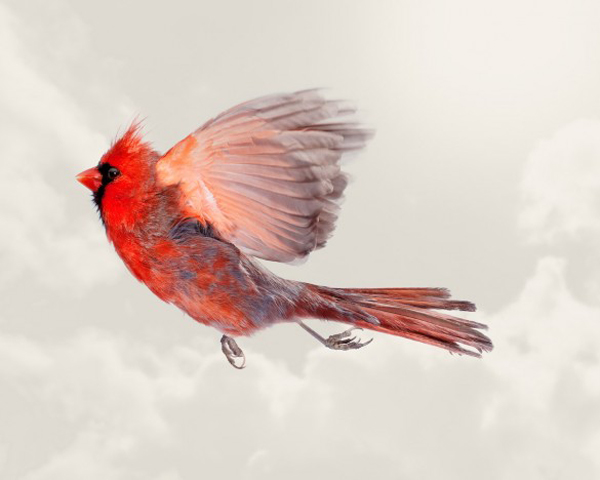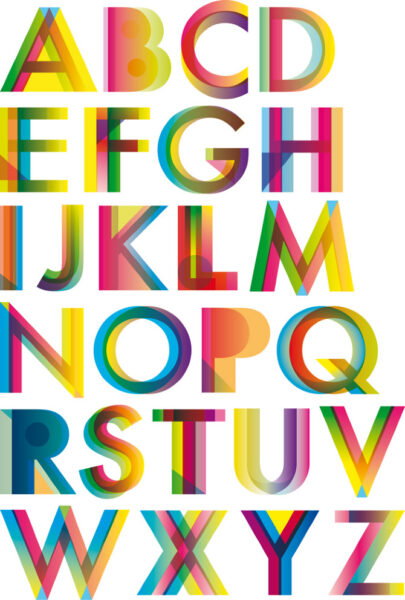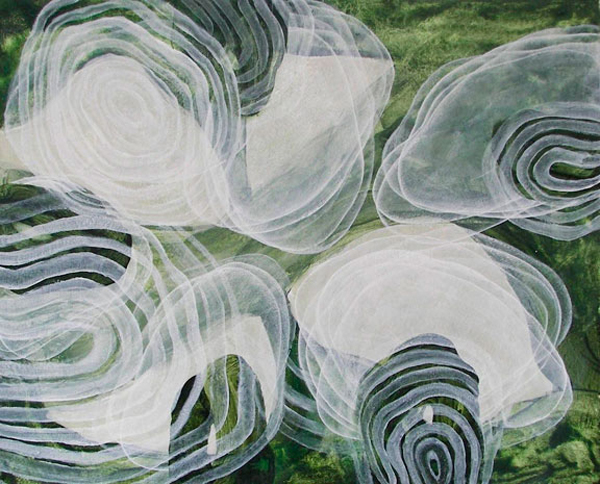Sky song

Are any of you feeling like this year took off at a gallop and hasn’t quite given you time to find your seat in the saddle? You can blame my recent quietude on that and Downton Abbey. (I quit cable only to be seduced by Dame Maggie Smith and WWI drama on pbs.org. But I digress.)
For the past couple of weeks I’ve been thinking a lot about birdsong. It started with this TEDtalk, in which Julian Treasure talks about the psychological benefits of birdsong. You know birdsong feels uplifting intuitively, but do you know why? The explanation is so sensible you’ll smack your forehead when I tell you. It’s because birds chirp when things are safe, and go quiet when there’s danger. So for thousands of years birdsong has been a subtle background signal that tells us, unconsciously, that we’re safe. Just because we don’t typically rely on that cue any more doesn’t mean our brains aren’t still wired for it. Though it’s an anachronism for many city dwellers, it’s still relaxing. And if the birds’ tones are particularly pleasant, they might even spur a sense of joy.
This is just one example of biophilia, a theory developed by E.O. Wilson postulating that humans have a natural, evolved affinity for the natural world. According to the theory, all kinds of natural stimuli can have a positive effect on wellbeing. (More here.) There’s a spike in research on this topic, and birdsong is among the aesthetic elements being researched. In the UK, the Guardian reported on a new study that will study effects of birdsong on people over the next three years. Eleanor Ratcliffe, the researcher conducting the study believes birdsong could also have effects on productivity and creativity.
Another question up for exploration: Does birdsong have the same effect when recorded? Sample of one reporting here, but I think it could. Earlier this week I downloaded the free Birdsong app for iPhone and have been listening in the mornings while getting ready for work, and it definitely perked me up. (Soundtrack to this post provided by the birds in my Brooklyn backyard recorded last spring. Bonus for birdwatching readers who want to tell me what species are hanging out back there.)
Delving deeper, research has shown that birdsong contains fractal patterns, suggesting some underlying symmetry in the sounds themselves that is pleasing to us. Fractals are intricate patterns that repeat themselves infinitely at different scales. Fractals can be found in coastlines, clouds, snowflakes, and blood vessels, as well as many works of art. (Jackson Pollock’s paintings have been analyzed and discovered to have fractal dimensions.) The authors of a paper on fractals and beauty, Alex Forsythe and Noel Sheehy, write:
It is thought that fractals tap into specialist cognitive modules that have developed to modulate information about living things, and that such modules are linked with emotional regulation… Hagerhall et al. reported that viewing fractal patterns elicited high alpha activity in the areas of the brain concerned with attention and visual spatial processing (the frontal lobes and parietal area).
Allow me to translate: Research suggests that our brains respond unconsciously to fractals, regarding them as information that gives us critical insight about our surroundings, and tell us how to feel them. We don’t need conscious knowledge that fractals are involved. Regardless of our awareness, we sense an intuitive order that gives us comfort. In fact, the authors note that studies have shown fractal patterns can reduce physiological stress. Another primal, comforting sound – the human heartbeat – also has a fractal dimension, and the more fractal it is, the healthier it is likely to be. So, perhaps birdsong actually has a kind of symmetrical microstructure that speaks to us through these hidden neural pathways. And perhaps tapping into its tones and rhythms could help create soundscapes that can counteract some of the stress of hectic, noisy modern lives.
As our favorite Portlandia crafters know, looking at images of birds doesn’t hurt either, and I love this series by photographer Paul Nelson, featured in an exhibit called Sky and Sea put on by Lux Archive at The Natural Wine Company in Brooklyn. It’s wonderful to see the birds set apart from the world, aloft. (Even better to know none were harmed in the shooting – Nelson uses a specialized rig to capture the ethereal images.) The exhibit runs until May 9.
*Correction: The original version of this post misidentified the site of the exhibit. The exhibit is at The Natural Wine Company, not the Lux Gallery (if such a place even exists!)





Discussion (2 Comments)
wonderfully thought-provoking post, as usual! I never would have thought fractals and birdsongs were related. huh. and I love the idea that we have a joyful response to birds singing because of something deep within our collective unconscious. beautiful.
Could you direct me to the research that shows that birdsong contains fractal patterns?